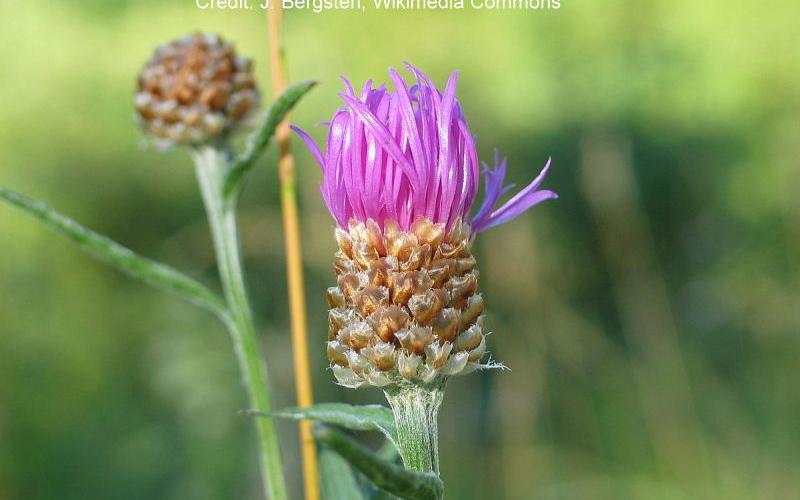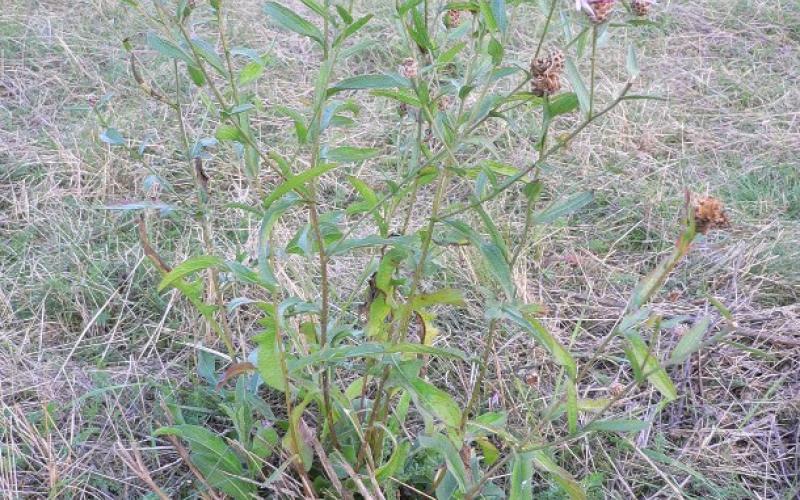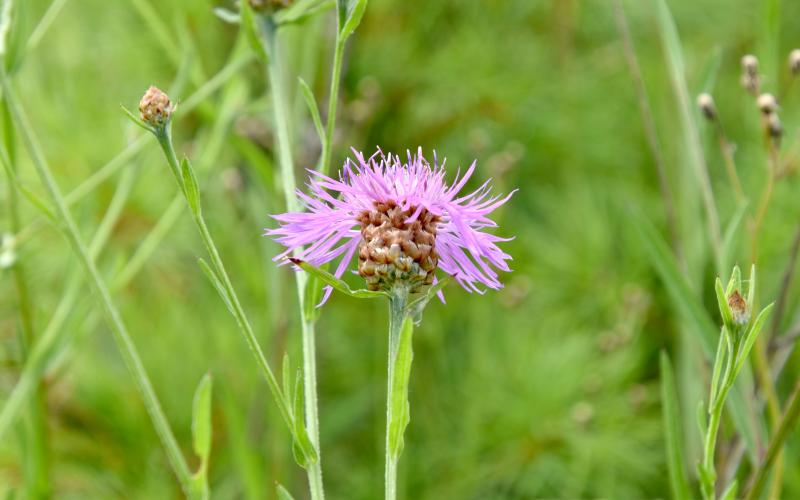Common Name: Brown Knapweed
Scientific Name: Centaurea jacea L.
Alternate Names: Brown-rayed knapweed, brown-ray knapweed and brownray knapweed
Related Species: Other knapweeds and hybrids including spotted knapweed, Centaurea stoebe L. ssp. micranthos (Gugler)
Legal Status
All above and below ground parts of the plant must be destroyed. Additionally, no transportation, propagation, or sale of this plant is allowed. Failure to comply may result in an enforcement action by the county or local municipality.
Background
Brown knapweed is native to Europe. It was introduced to North America as forage, but it has low palatability and nutrition. It escaped cultivation and has become invasive, but is not common in Minnesota.
Description
- Brown knapweed is a perennial plant that has multiple upright, reddish stems that are 1 to 4 feet tall.
- Small, single flowers are clustered together to form composite flower heads. Flowers are mostly pink/purple, sometimes having white centers. They are borne at the ends of branches and are approximately one inch in diameter. Flowering occurs mid-summer until fall followed by the production of white to light brown seeds with short plumes.
- The bracts below the flowers are rounded and wide at the tip and often have brown tips.
- Leaves are alternate, lance shaped and pubescent (hairy), occasionally with wavy margins (leaf edges) or lobed. Basal leaves grow up to four inches long. Seedlings are tap-rooted and mature plants develop a cluster of roots below the crown.
- Spotted knapweed is a similar species that is common in Minnesota. The two knapweed species are easily distinguished by the leaf shape and color. Spotted knapweed leaves are gray-green and are more deeply lobed.
Habitat
Brown knapweed can be found growing in woodland clearings, yards, ditches, in disturbed areas, pastures and other grasslands. It thrives in sunny locations and is also somewhat shade tolerant. It thrives in cool, moist locations.
Means of spread and distribution
It spreads by seed that can be moved by wind, water, wildlife, equipment and humans. It has been documented at a small number of sites in northern Minnesota.
Impact
Brown knapweed outcompetes desirable species to form large monocultures. Forage quality, species diversity and wildlife habitat are reduced. A similar weed species, spotted knapweed, is abundant and can hybridize with brown knapweed if the species co-exist. Concerns about a resulting vigorous hybrid add to the rational for brown knapweed eradication in Minnesota.
Prevention and management
- To prevent the spread of this plant, clean equipment, vehicles, and footwear before transportation from brown knapweed-infested areas.
- For all management options, infestation sites will need to be monitored and treated repeatedly until the seedbanks are depleted.
- A combination of hand-pulling and digging is an option for small infestations.
- Herbicides are a very effective management tool for brown knapweed. For specific herbicide recommendations, contact your University of Minnesota Regional Extension Educator.
- Mowing does not control brown knapweed and the mower may spread seed.
- Biological control was developed for some other knapweed species, but is not an effective control option for brown knapweed.




